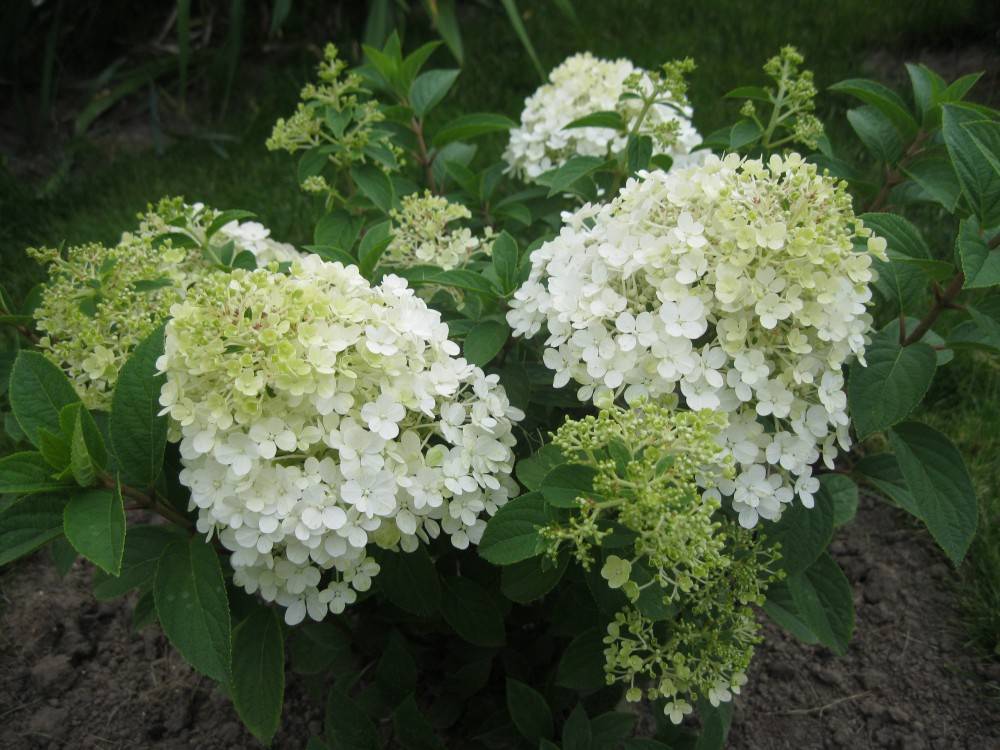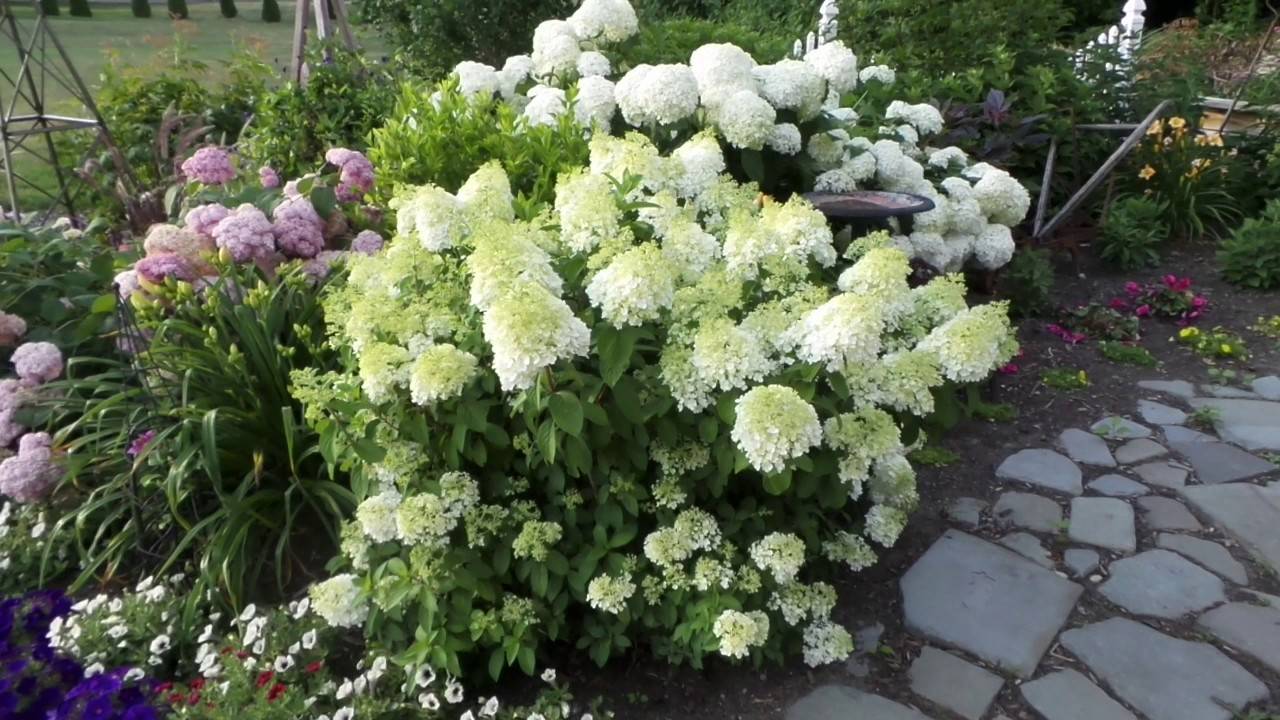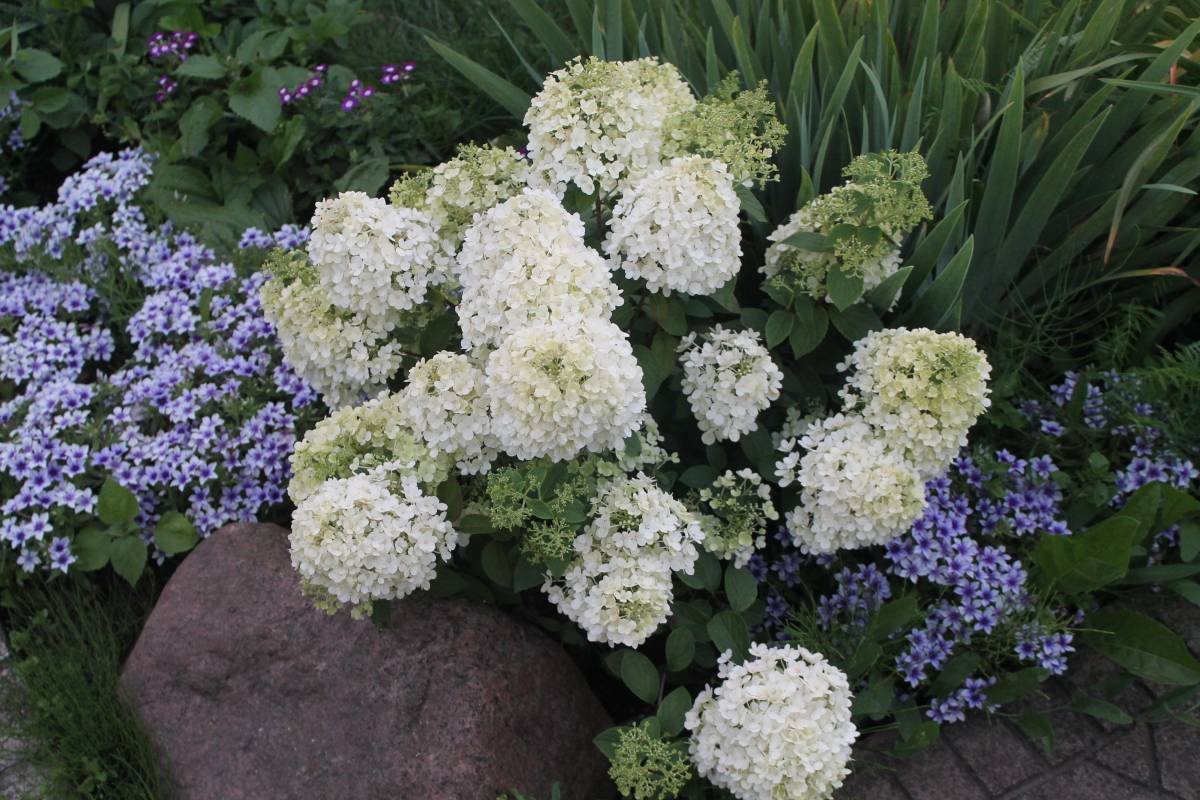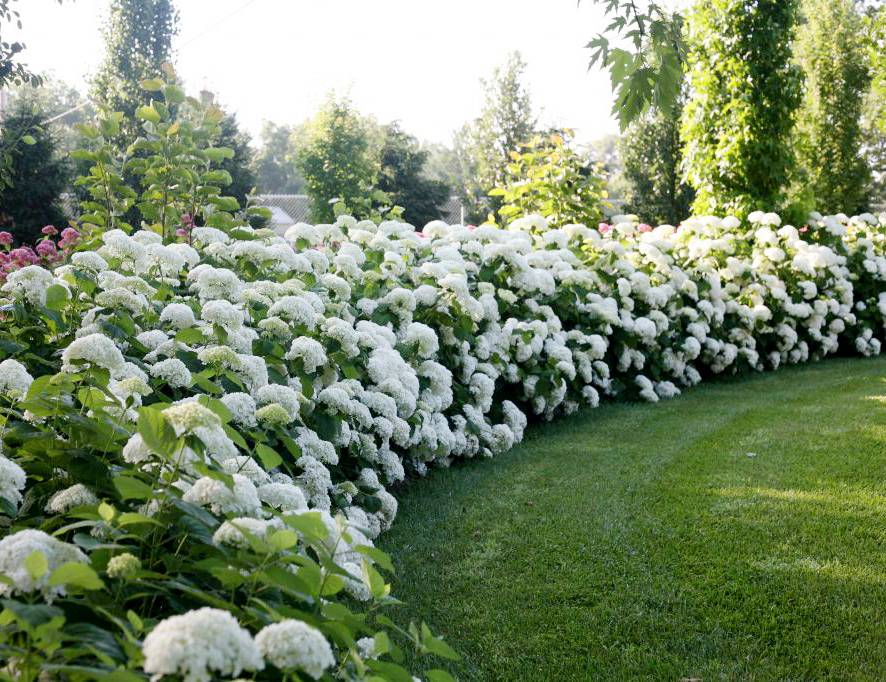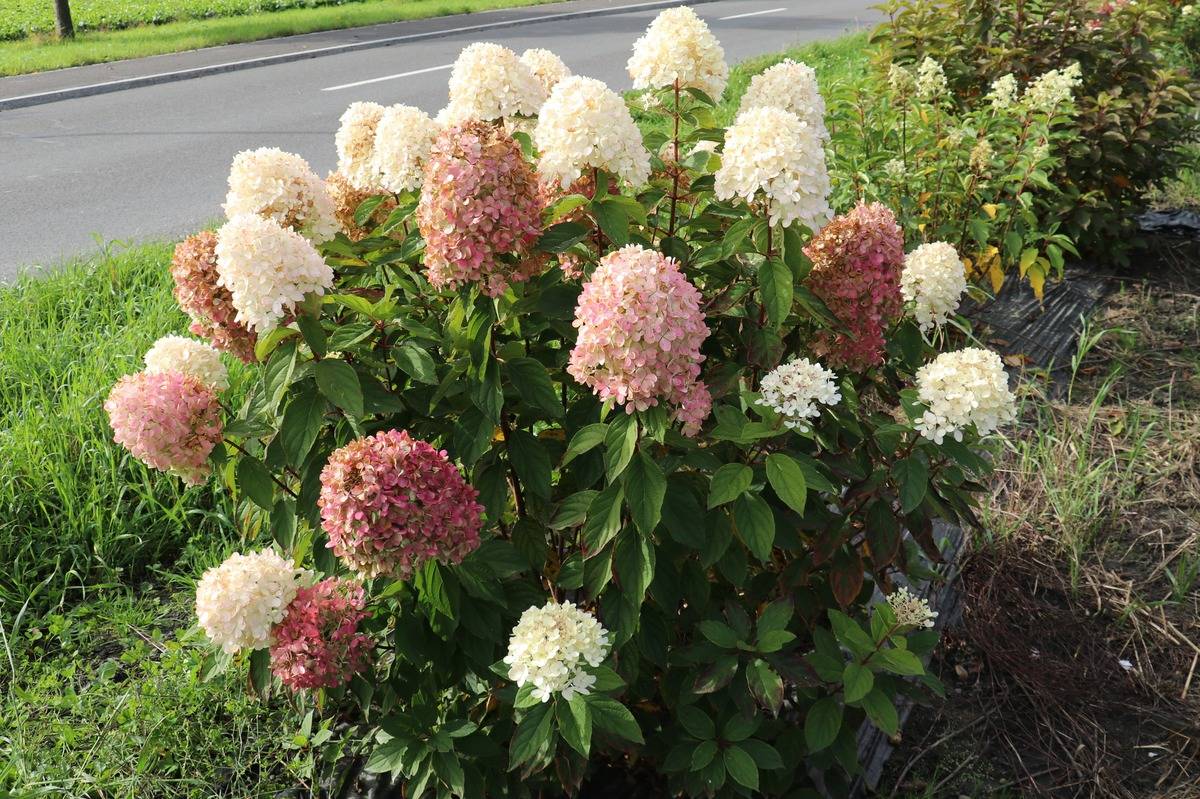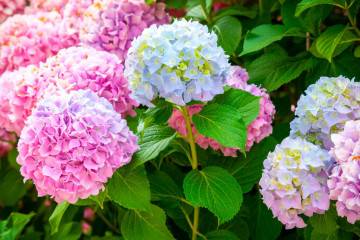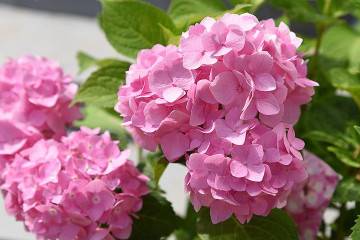Hydrangea Bobo - a brief description of the features of the paniculate variety
Content:
Modern summer residents often have a plant called Bobo hydrangea in the garden. This flower is decorative and easy to care for. Thanks to him, you can easily decorate any territory and give the site an attractive and unique appearance.
Hydrangea Bobo variety: characteristics and appearance
In size, the bobo is one of the smallest hydrangea species. At the same time, the inflorescences of the plant are large, collected in panicles, resembling phlox.
The height of an adult bush does not exceed 70 cm, and its diameter does not exceed 50 cm. The shrub has a spherical shape and is densely covered with rich green foliage. Inflorescences are pure white, as well as white with yellowish or pink tints.
Hydrangea Bobo is of Belgian origin, characterized as a winter-hardy plant that is resistant to sudden changes in temperature. This unusual shrub blooms in the month of August and September. Differs in unpretentiousness, for which it is appreciated by gardeners.
The main advantages of Bobo hydrangea are:
- variety of colors;
- miniature and aesthetic appearance;
- resistance to frost and temperature extremes.
In landscape design, experts often use panicle hydrangea. Thanks to its loose conical inflorescences, it easily brings airiness to any landscape.
Landing rules
It is recommended to plant a plant in the fall. It is this period that is considered the most optimal and makes it possible for the flower to take root before the onset of frost. However, in the Urals and Siberia, hydrangea is planted in the spring, since in the fall, before the onset of frost, it does not have time to take root.
When choosing a location, experts recommend giving preference to shaded areas. Hydrangea thrives best in diffused lighting without direct sunlight. Planting a flower in drafts is not recommended.
Before planting a plant, you must prepare the soil in advance. It is best if it is a slightly acidic soil. To increase the acidity, you can add coniferous soil or peat to the soil.
Bobo hydrangea loves space, so it is recommended to plant the seedlings at a distance from each other within the range of 70 to 100 cm. Before planting, the holes must be prepared in advance. Their depth should be in the range from 40 to 45 cm. Be sure to lay a drainage layer on their bottom, since the flower does not tolerate stagnant moisture at the roots.
You can plant both seeds and seedlings. The most important thing is that the planting material is of good quality.
After planting, experienced florists recommend not only watering the plant, but also mulching it. For planting, you should choose a calm, sunny, but not hot day.
Care for panicle hydrangea
This panicle hydrangea does not tolerate a transplant very well, so when planting, you should choose a permanent place carefully. The site should be open and well lit, but at the same time protected from drafts.Light shading of Bobo varietal hydrangea is allowed.
Watering a flower
Bobo hydrangea is described as a drought tolerant plant. But, despite this, in a dry and hot summer, the flower needs regular abundant watering.
Water the plant with soft, preferably rainwater. If tap water is used, then it must first be given time to settle and warm up.
How and how much to feed
According to the description of the Bobo hydrangea and the reviews of experienced florists, it turns out that the plant is almost impossible to grow without timely and repeated feeding. Only by saturating the soil with all the necessary substances and components can a long and lush flowering be achieved.
It is recommended to use fertilizers that are rich in phosphorus and potassium for feeding.
In the summer, you should use funds aimed at intensive flowering, and in the fall it is best to feed the flower with superphosphate.
Shrub pruning
Hydrangea paniculata Bobo is not a very large plant. Therefore, without trimming, of course, it will not disappear, but its decorative characteristics will noticeably decrease.
Formative pruning is done to keep the plant looking well-groomed. It is she who will help to avoid sloppiness and violation of compactness.
If you do not cut the panicle hydrangea, then flowering in a couple of three years will become rare, the inflorescences themselves will be small and inconspicuous. With the help of pruning, old branches are removed from the plant, which limit the intensity of flowering, do not allow new shoots to develop.
Pruning is also necessary to rejuvenate the flower. It is these activities that help make the plant healthy and maintain its youth. When pruning, broken, damaged, as well as diseased and frozen branches are removed.
Pruning hydrangeas is best done in the spring. It is as a result of the measures taken that recovery processes are launched, and the growth of new healthy shoots is activated.
The pruning procedure should be carried out as early as possible. The most important thing is to have time before the moment when the sap flow begins and the kidneys wake up. Particular attention should be paid to the weather factor. We must wait until stable warm weather is established. At the same time, it is also impossible to tighten too much, since late pruning can lead to the fact that the plant will bloom only the next year.
How does it multiply
Hydrangea paniculata Bobo propagates by layering and cuttings.
When a plant is propagated by layering, planting material is taken in the spring or at the end of summer. To do this, a suitable branch is bent to the ground and fixed, deepened and buried in the middle. Within a year, a root system is formed on the layer, and after that the new plant is separated from the mother.
You can propagate a flower by cuttings in spring and summer. In the spring, cuttings are harvested from those that remain after pruning. They are kept in water for several days, and then their lower sections are processed in a root formation stimulator and planted in containers with loose and moist soil.
Summer cuttings are considered more risky rooting material. The most optimal breeding period is considered to be from June 10 to 15. For the preparation of cuttings, young shoots are used, on which flower buds have not formed. They are cut to ten centimeters in size, the lower leaves are removed from them, keeping only 3-4 leaves on top. Prepared shoots are planted in prepared soil and left until new shoots are formed.
What problems can you face
Hydrangea paniculata Bobo was bred by breeders taking into account all the wishes of gardeners. Despite the fact that you should take care of the flower carefully, usually serious problems during cultivation do not arise even for novice florists.
The main problem that people may face when growing a flower is the surface occurrence of plant roots. In this case, there is a possibility of damage to them, which directly damage the flower itself.
Cold season
Prepare hydrangea for winter in advance. Despite the high winter hardiness, if the plant is weakened or affected by pests, then it will not be able to safely endure the winter.
With the onset of autumn, you need to stop watering and remove the leaves. As for the shelter of the plant, the method is chosen by each gardener individually. Some prefer hilling, others additionally cover the branches. When choosing a method, it is imperative to take into account climatic conditions.
Regardless of the chosen method of shelter, the plant should not be covered tightly, as it can rot and rot.
After winter, as soon as the active melting of snow begins, the bush is freed from the shelter. To remove it, it is best to choose a cloudy day, since bright sunlight can burn the bush out of habit.
After opening, the bush should be cut off, leaving three to four buds on the shoots. Shoots should not be cut too short, as this can lead to the removal of all flower buds. After pruning, it is recommended to feed the flower with nitrogen fertilizer. It is his introduction that will provoke the growth of new shoots and the formation of buds.
Attractive and fast growing hydrangea is used to create landscaping compositions and decorate gardens. Bobo dwarf variety is distinguished by long and abundant flowering. Due to its low growth, the variety is suitable for growing in containers that can be placed on terraces and balconies. The plant does not require special care, as a result of which its popularity is constantly growing. If you provide the flower with proper care, then it will delight every summer with lush flowering and will be able to endure even severe frosts.
